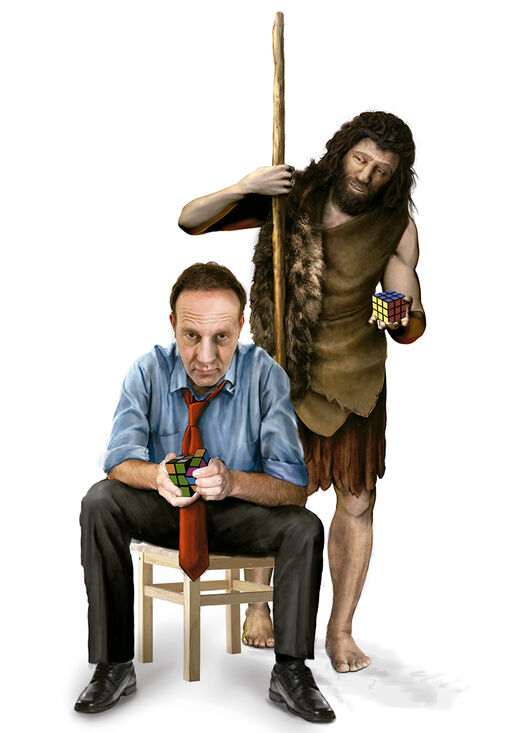A new book analyzes the complexity of the Neanderthal world
Nearly 60 international experts offer a synthetic vision of the most up-to-date knowledge of Neanderthals, in a reference manual for both professionals and enthusiasts of human evolution
Updating Neanderthals: Understanding Behavioural Complexity in the Late Middle Palaeolithic is the first scientific book enclosing a synthetic overview of the huge amount of recent works in Middle Palaeolithic studies and the most updated and comprehensive knowledge of Neanderthals. The volume explores the history of research and methodological advances, genetics, subsistence, technology, social and cognitive behaviours in the Late Pleistocene, and the implications of the interaction between Neanderthal, Denisovan, and Sapiens.
This book has been published by Academic Press, of the Elsevier group, and has been edited by Dr. Francesca Romagnoli, professor at the Universidad Autónoma de Madrid, Dr. Florent Rivals, ICREA professor and IPHES-CERCA researcher, and Dr. Stefano Benazzi, professor at the University of Bologna in Italy.
Since the discovery of skeletal remains at Feldhofer Cave in 1856, Neanderthal remains have attracted the attention of the scientific and social communities. All of us have interiorized the image of a brutal and simian being since we were kids and attracted by the prehistoric world. It might surprise that this image is still latent in everyone, including some scientists, leading to contrast the opposite idea of ‘us’ as human beings and ‘the others’ (i.e. the Neanderthals) as non-humans.
In the last two decades, several novel theoretical and methodological approaches in Prehistory have opened unexpected and fascinating perspectives in the reconstruction of Neanderthal lifestyle, habits and skills, evolutionary history and genetics thanks to the technical improvements in archaeological science and growing multidisciplinary studies. The book for the first time encloses this novel and updated knowledge of our human relatives. This was possible thanks to the collaborative effort of more than 60 scientists, experts in Neanderthal studies.
According to Dr. Florent Rivals “this editorial project, overcoming a case-study approach and putting together so many colleagues, is something unusual. However, since the beginning we thought it was necessary to involve the experts who contributed in the last years to improving our knowledge of Neanderthals”.
Which is some of the knowledge now accepted by the scientific community about Neanderthals that we can read about in the book?
Nowadays, we know that Neanderthals populated a vast area from East Asia to Western Europe, through the Black Sea region, the Levant and all of Europe and their diversity in technology, subsistence and social dynamics in such a huge area is discussed in the book. Also, this book shows that the diet of Neanderthals was more diverse than previously thought, which beyond large mammals, it also incorporated rabbits, seafood and fishes, birds and vegetal elements. Their daily, seasonal and annual movements to obtain food and other resources, including raw material for tool production, were planned according to the environment and changing climate, showing a great behavioural plasticity of these human groups. Speaking of cognition, it is quite evident that Neanderthals engaged in some forms of symbolic behaviour at different locations and chronologies. The whole body of evidence is considered in the book, also including the recent and debated discovery of cave ‘art’.
According to Dra. Romagnoli “studies of Neanderthals in the last 20 years have probably changed our knowledge of this human group more than that of any other archaic population and have clearly shown that Neanderthals and modern humans were culturally and cognitively closer than previously thought. We are now well beyond the ‘rehabilitation’ of the brutal Neanderthals and this book clearly shows this”.
“Since the beginning, we thought about a volume that was of interest for experts and non-expert in different fields of human evolution. The variety of people, knowledge and behaviours in the Pleistocene has the potential to stimulate a collective reflection within modern society on themes and concepts extremely topical and needed, such as diversity, migration, intercultural competencies, inclusion and cooperation”.
“Updating Neanderthals: Understanding Behavioural Complexity in the Late Middle Palaeolithic” is a reference for researchers, students, and advanced amateurs in prehistory, archaeology, human evolution studies, evolutionary psychology, paleoecology, and cultural evolution.
You can find more information about the manual at the link below



